
The People's Party, usually known as the Populist Party or simply the Populists, was an agrarian populist political party in the United States in the late 19th century. The Populist Party emerged in the early 1890s as an important force in the Southern and Western United States, but declined rapidly after the 1896 United States presidential election in which most of its natural constituency was absorbed by the Bryan wing of the Democratic Party. A rump faction of the party continued to operate into the first decade of the 20th century, but never matched the popularity of the party in the early 1890s.
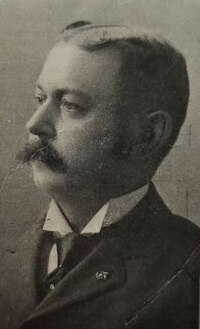
Frederick Bartlett Fancher was an American politician who was the seventh governor of North Dakota from 1899 to 1901.

United States gubernatorial elections were held on November 7, 2000, in 11 states and two territories. The elections coincided with the presidential election. Democrats gained one seat by defeating an incumbent in West Virginia. As of 2024, this remains the last gubernatorial cycle in which a Democrat won in Indiana.

The state and local elections in North Dakota in 2006 proceeded as follows:
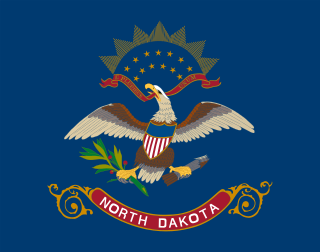
The politics of North Dakota were shaped historically by early settlement by people from the Northern Tier, who carried their politics west ultimately from New England, upstate New York, and the Upper Midwest. The area and state also received numerous European immigrants and migrants, particularly during the era of opening up of former Native American lands for sale and settlement.
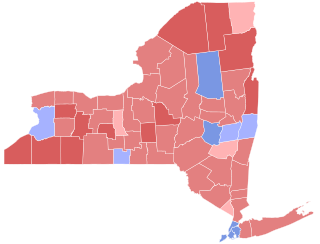
The 1898 New York state election was held on November 8, 1898, to elect the governor, the lieutenant governor, the Secretary of State, the state comptroller, the attorney general, the state treasurer and the state engineer, as well as all members of the New York State Assembly and the New York State Senate. This election is the most recent election to feature a candidate for governor of New York who eventually became both Vice President of the United States and President of the United States after serving as Governor of New York.

A general election was held in the U.S. state of North Dakota on Tuesday, November 2, 2010, with primary elections being held on June 8, 2010.
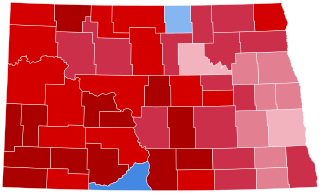
The 2016 United States presidential election in North Dakota was held on Tuesday, November 8, 2016, as part of the 2016 United States presidential election in which all 50 states plus the District of Columbia participated. North Dakota voters chose electors to represent them in the Electoral College via a popular vote, pitting the Republican nominee, businessman Donald Trump, and running mate Indiana Governor Mike Pence against Democratic nominee, former Secretary of State Hillary Clinton, and her running mate Virginia Senator Tim Kaine. North Dakota has three electoral votes in the Electoral College.

The 1920 United States Senate election in North Dakota took place on November 2, 1920. Incumbent Senator Republican Senator Asle Gronna ran for re-election to a third term. However, he was narrowly defeated in the Republican primary by Edwin F. Ladd, the President of the North Dakota Agricultural College, who had been endorsed by the Nonpartisan League. In the general election, Ladd was opposed by H. H. Perry, the Democratic nominee and a Democratic National Committeeman. As Republican presidential nominee Warren G. Harding overwhelmingly won North Dakota over Democratic nominee James M. Cox, Ladd also staked out a wide victory—though his margin of victory was not as large as Harding's.

The 1892 United States presidential election in North Dakota took place on November 8, 1892. As North Dakota had been admitted to the Union as the 39th state on November 2, 1889, this was the first presidential election in which North Dakota cast electoral votes. All contemporary 44 states were part of the 1892 United States presidential election. Voters chose three electors to the Electoral College, which selected the president and vice president.

The 1896 United States presidential election in North Dakota took place on November 3, 1896. All contemporary 45 states were part of the 1896 United States presidential election. Voters chose three electors to the Electoral College, which selected the president and vice president.

The 2020 United States presidential election in North Dakota was held on Tuesday, November 3, 2020, as part of the 2020 United States presidential election in which all 50 states plus the District of Columbia participated. North Dakota voters chose electors to represent them in the Electoral College via a popular vote, pitting the Republican nominee, incumbent President Donald J. Trump from Florida, and running mate Vice President Michael R. Pence from Indiana against Democratic nominee, former Vice President Joe Biden from Delaware, and his running mate Senator Kamala Harris of California. North Dakota has three electoral votes in the Electoral College.
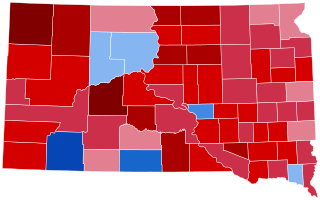
The 2020 United States presidential election in South Dakota was held on Tuesday, November 3, 2020, as part of the 2020 United States presidential election in which all 50 states plus the District of Columbia participated. South Dakota voters chose electors to represent them in the Electoral College via a popular vote, pitting the Republican Party's nominee, incumbent President Donald Trump, and running mate Vice President Mike Pence against Democratic Party nominee, former Vice President Joe Biden, and his running mate California Senator Kamala Harris. South Dakota has three electoral votes in the Electoral College.

The 1944 North Dakota gubernatorial election was held on November 7, 1944. Republican nominee Fred G. Aandahl defeated Democratic nominee William T. DePuy with 52.02% of the vote.

The 1926 North Dakota gubernatorial election was held on November 2, 1926. Incumbent Republican Arthur G. Sorlie defeated Democratic nominee David M. Holmes in a landslide victory with 81.74% of the vote.

The 1964 South Dakota gubernatorial election was held on November 3, 1964.

The 1914 North Dakota gubernatorial election was held on November 3, 1914. Incumbent Republican L. B. Hanna defeated Democratic nominee Frank O. Hellstrom with 49.58% of the vote.

The 1912 North Dakota gubernatorial election was held on November 5, 1912. Republican nominee L. B. Hanna defeated Democratic nominee Frank O. Hellstrom with 45.45% of the vote.

The 1912 South Dakota gubernatorial election was held on November 5, 1912. Incumbent Republican Governor Robert S. Vessey declined to run for re-election to a third term. Lieutenant Governor Frank M. Byrne won the Republican primary to succeed Vessey, and then faced State Senator Edwin S. Johnson, the Democratic nominee, in the general election. Byrne only narrowly defeated Johnson, winning just 49% of the vote to Johnson's 46%, the closest gubernatorial election since 1898.

The 1918 South Dakota gubernatorial election was held on November 5, 1918. Incumbent Republican Governor Peter Norbeck ran for re-election to a second term. He won the Republican primary unopposed and faced Nonpartisan League candidate Mark P. Bates, a farmer, and Democratic nominee James E. Bird in the general election. Norbeck's share of the vote decreased from 1916 to 53%, but he benefited from the split field. Bates placed second with 26% of the vote, while Bird placed third with 19% of the vote.






















